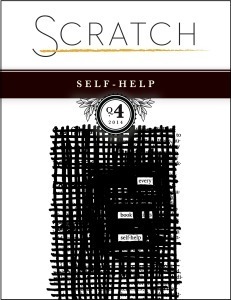Jane Friedman's Blog: Jane Friedman, page 157
October 27, 2014
What Should Authors Blog About?

Wesley Fryer / via Flickr
Note from Jane: Tomorrow, I’m offering a 90-minute live online class on how to effectively blog, in partnership with Writer’s Digest. Find out more and register.
The chain of events goes something like this:
An author’s book nears its publication date (or perhaps the author is attempting to secure a traditional book deal). She knows she needs to market and promote the book and/or build a platform.
She finds (or hears) advice that blogging is a good way to accomplish #1.
She wonders: What do I blog about?
My unproven theory: We have many authors blogging poorly because of this series of events.
It’s not dissimilar to authors ending up on Twitter or creating a Facebook page that ultimately fails to engage readers or sell books.
But then why do we hear all the time that these are good marketing practices?
Because it’s true that blogging is a very effective marketing tool, when done well. I started blogging (in 2008) because it seemed like a fun creative outlet—a practice that would build discipline and better engagement with my community. Nearly 7 years later, blogging acts as the core of my platform and has largely made it possible for me to be a full-time entrepreneur.
So I’m not down on blogging, at least for myself. But I was willing to put in 7 years of effort, and I also improved as I went along. My best blog posts didn’t start appearing until roughly 2011-2012.
You can be a quicker study that I was and be a lot more strategic. (See Chris Guillebeau for an example and excellent how-to guide.) Unfortunately, many authors pursue blogging without any understanding of the medium, and also as little more than a means to an end.
Meaningful blogging requires patience and persistence, as well as a willingness to learn what comprises good, compelling online-driven or online-only writing. It’s not the same as writing for formal publication or in other genres/mediums—or even for websites other than your own.
I’m writing this long preface in response to the question “What do I blog about?” because the first answer may be: If you have to ask, maybe you shouldn’t be blogging. In that, my position is somewhat stubbornly Zen: if the action is too forced or contrived, the blog may be doomed from the start. Or you may not stick with it.
On the other hand, I want to encourage experimentation. If you can approach this because it kind of does sound like fun, then let’s spark your imagination as to what you might blog about.
Here are several models to consider, based on how challenging I think they are (assuming you want your blog to “pay off”).
Easy: The Literary Citizenship Model
If you’re not familiar with literary citizenship, you can read more about my views on it here. It basically means celebrating and bringing attention to authors, writing, and books—the things you presumably love and want to support.
Blogging with the intent to promote literary citizenship opens up a lot of post possibilities, including:
Informal book recommendations or reviews
Q&As or interviews with people in the community (usually authors)
“What I’m Reading Now” types of posts and other “media consumption” lists where you talk about what stuff you’re watching, saving, listening to, collecting, etc.
Key benefits: You’re building a great network of contacts as you build some excellent content at your site. Every author loves to get attention (or find a new fan) for their work.
Where the difficulty lies: Lots of literary citizenship activity exists online, in many forms. To get a large readership will require a unique angle or spin—although this is true of any blogging effort.
Easy-Medium: How-to Model
This is my model. Many seasoned authors have considerable advice and insight for others—and the audience of aspiring writers and established authors is massive. The downside: Connecting with other writers doesn’t necessarily grow your readership; you end up in an echo chamber with other writers.
Key benefits: If you already teach writing or mentor other writers, you probably have some content you can re-purpose to fuel your early blog posts. Initially, you’ll have no shortage of ideas, and your first readers will share your insightful advice on social media and help you build a traffic base.
Where the difficulty lies: In my experience, burn out. After a few years, it’s tough to keep things fresh and interesting. Your readers, as they advance, may also outgrow your blog.
Medium: Behind the Scenes Model
You write about the research, people, news stories, or current events that play a role in the construction of your books or other work. You might also develop competitions and events that focus on reader engagement, such as having readers name your novel’s characters, choose the best cover, etc. Presumably, readers will enjoy knowing more about the context and ideas that affect your writing and being involved in your future work.
Key benefits: For most writers, it feels natural to discuss the things that influence their work, and you will likely uncover and engage your most important fans.
Where the difficulty lies: You may run out of material quickly, and not have a very high frequency of posts. Or you may despise the idea of involving readers in your work.
Difficult: Personal Essay or Daily Life Model
Regardless of genre, some writers write short missives—that can extend into personal essays—that comment on what’s happening day to day or that reflect on their personal life. This could also involve regular posting of specific media, such as photos or videos.
Key benefits: It can be a good creative outlet or practice, especially if you’re committed to blogging on a schedule. Fans of your work may enjoy the intimacy (though some authors prefer to have an air of mystery).
Where the difficulty lies: Not everyone can write entertainingly about themselves (and some don’t want to). For writers who aren’t yet known, it will be hard (if not impossible) to interest other people in the details of your personal life, unless you’re a superlative writer.
This is not an exhaustive list of what you could blog about, but it gives you an idea of the most popular options.
If you’d like more advice on blogging, see the following posts:
Get Started Guide: Blogging for Writers by Jane Friedman
10 Ways to Build Long-Lasting Traffic to Your Author Website or Blog by Jane Friedman
Please Don’t Blog Your Book: 4 Reasons Why by Jane Friedman
It’s Time for (Many) Experienced Writers to Stop Blogging by L.L. Barkat
Top 10 Blog Traffic Killers by Michael Hyatt
2 Strategic and Compelling Reasons to Keep Blogging—And When to Kill a Blog by Dan Blank
How Long Does It Take to Get Blog Readers? (advice collected from many bloggers by Nina Amir)
The post What Should Authors Blog About? appeared first on Jane Friedman and was written by Jane Friedman.
October 24, 2014
How to Customize a Template-Based Author Website

Note from Jane: Today’s guest post is by Simone Collins (@SimoneHCollins) at ArtCorgi. See her earlier post on The Advantages of Author Portraits.
Through my website ArtforAuthors.com and my company ArtCorgi, I help authors style websites and social media pages in a manner that best presents their personalities and writing style.
All too often, I visit authors’ websites only to find one of WordPress’s default templates staring me in the face. A website that is not adequately styled sends several negative messages:
It suggests the creator is not technically savvy, which suggests he or she might also lack savvy in other areas.
It suggests the creator has not put much effort into the website, so why should the visitor care about its contents?
It suggests the website is not yet complete‚ giving the reader the impression he or she should come back later.
Making a template-based website look polished and unique, be it a destination created via WordPress, Squarespace, Wix, or Weebly, is akin to having a suit nicely tailored. With minimal cost and time, you can turn what might be an unflattering ensemble into a presentation that makes you look like a million bucks.
1. Choose a strong foundation.
No matter how much tailoring goes into an outfit, it will look bad if its fabric is cheap or its colors fundamentally clash with your skin tones. The same goes for your chosen website template. If the template does not work well with the type of content you would like to feature, or if it clashes with your personal style, no amount of added tinkering will make it look good.
Invest a significant amount of time into researching and choosing a template that suits your needs. If you are using WordPress, I recommend considering Themeforest as a resource (it is my go-to place to find great themes). You can also use WordPress’s theme directory.
Search for WordPress themes and sort by “best sellers.” Themes that sell well are far more likely to be adaptable and useful than those which have yet to amass a following. Also look for themes that are responsive (which means they will adapt well to different web browser sizes and mobile devices) and themes that have a wide variety of shortcodes (which give you the ability to easily insert cool features and formatting frameworks without a lot of effort).

Once you have found several themes you like, preview them on as many different devices as possible: iPhones, Android phones, Safari browsers, Chrome browsers, Firefox browsers, iPads and other tablets, etc. You may find that some themes have formatting issues in certain browsers, while others are more adaptable. It is better to catch those issues before you settle on a theme and invest time and money in making it look good.
2. Build your shopping list.
Nearly all themes enable you to customize features such as:
Banner images
Favicons (the small icons that appear in a browser’s tab)
Colors
Homepage configuration
A special tagline
You can typically find what features can be customized by poking around your website theme’s settings and special features (such as gallery, banner, and slideshow features).
Once you have chosen a theme and know what features it offers, I recommend creating a list of every asset you need to collect and its required format.
You may, for example, need:
A 100 x 300 pixel banner image
A 16 x 16 pixel favicon image
Three hexadecimal colors for your site’s primary, secondary, and tertiary colors
Three to five 1000 x 5000 pixel banner images for your homepage
Knowing exactly what images you need, and in what dimensions, will help you create or purchase images that look good once you put them in place.
3. Collect your website’s key elements.
Once you have a list of required elements, you can gather them in an organized fashion and come up with a collection of customizations that work well together. You can start by creating a logo for your site, then incorporating that logo and its coloring into your banner image, favicon, and color scheme.
I often help people create website banners and logos (through my company, ArtCorgi) that feature portraits of them. Below is a snapshot of a website that uses a portrait created by one of our artists, Crespella, in its header image.

You will notice that Stephen, the owner of the website pictured, used his header image to dictate his site’s color scheme. His website is very simple and new, but comes across as professional and intentionally built.
You do not need a special portrait or illustration commissioned to create a polished site. Canva.com is an excellent resource when it comes to building nice graphic elements for your website that can be sized to fit any proportion necessary. Even professional photography can be purchased through the tool at very reasonable prices (e.g., around one dollar).
To develop a cohesive color scheme, I recommend utilizing tools like Paletton or Adobe Color CC.

Adobe Color CC
4. Put those images in place.
Once you have all the images and information you need to customize your theme, upload and adjust them as you see fit. A bit of tinkering is usually needed, as themes are full of surprises. An image or color scheme that you thought would look good can turn out to be hideous.
Keep your theme’s core assets (any custom banner and header images, information about your color scheme) in a centralized place so you can easily adjust elements later on.
You may also consider using the assets you collected to develop a unique look for your social media pages. Website headers can often be nicely adapted into Facebook, Google+, and Twitter cover images, and your website color scheme can be translated over to your Twitter profile’s color scheme. Having social media feeds that match well with your website helps you look all the more polished, professional, and serious about your work (and hence, worth heeding).
5. Fill your website with substantive content.
A beautiful outfit can do little to save the reputation of a person with lackluster personality and intellect. The same goes for a website. No matter how beautifully you have customized your theme, your website will reflect poorly on you if it has not been updated for a long time, lacks high-quality content, or has no content at all.
Choosing and customizing a beautiful website template is only the first step. While a beautifully built website can suggest to visitors that you are serious about your work and have substantive, valuable stories to share, the only way you can truly prove your worth is by sharing them.
The post How to Customize a Template-Based Author Website appeared first on Jane Friedman and was written by Simone Collins.
October 23, 2014
On Self-Promotion, Selling Out, and Burn Out
The Fall 2014 issue of Scratch (my magazine for writers) is now available. Inside, you’ll find a feature interview with New York Times bestselling author Austin Kleon, offering insights on how to balance your artistic lifestyle with marketing and self-promotion. Here’s what he says about being an author as his full-time job:
It’s weird because I’ve written about how you shouldn’t be afraid to take money for your art, and you shouldn’t be afraid to sell what you do, and you shouldn’t be worried about being labeled a sellout or whatever. But there are things that happen when your passion, when your avocation or calling or whatever you want to call it, becomes your bread-winning. It gets very complicated very quickly, and it can really turn into a drag. …
So for me, it’s like, when you’re just a web designer, and you’re at your desk and you make these silly poems on your lunch break because you’re just passing the time, and you just want to do something creative with yourself, then you throw them online because you’re like, What else am I gonna do with ’em … that is a different impulse than, the minute I post a poem now, fifty thousand people see it. And that’s just an audience thing.
Money-wise, it would be like being in a band that goes suddenly from “we all play in the bar after work,” to playing stadiums. It’s that kind of shift. What happens when the thing that kept you alive suddenly becomes the thing that literally keeps you alive? The thing that kept you spiritually alive now not only has to keep you spiritually alive, but also has to keep you financially alive. Like, literally alive. Like, food in your mouth.
Click here to read the full interview for free. (Registration is required.)
Also free in this issue:
Publishing While Black: A Scratch Roundtable, with Rachel Kaadzi Ghansah, Harmony Holiday, Christopher Jackson, and Kiese Laymon
How Writers (Actually) Get Paid by Nicole Dieker, on how freelancers can more efficiently and effectively get their payments
Confessions of a Bestselling Author, a personal and illustrated essay by Andrew Shaffer
Only subscribers get access to the full issue, including some of my own pieces:
The Power and Intimacy of Email: why and how to start an email newsletter
He Comes From the Future, my interview with Richard Nash on the book industry and how authors can succeed regardless of Amazon’s next moves
It’s Not Personal: How to Create a Collaboration Agreement, by attorney Helen Sedwick, complemented by a downloadable sample agreement you can customize
Contracts 101: The Fine Print, the last installment in my series on how to read and negotiate a publishing contract
The post On Self-Promotion, Selling Out, and Burn Out appeared first on Jane Friedman and was written by Jane Friedman.
October 17, 2014
How to Tell If Your Story Idea Is Mediocre—And How to Improve It

by Royce Bair / via Flickr
Note from Jane: Today’s guest post is adapted from The Writer’s Advantage: A Toolkit for Mastering Your Genre by Laurie Scheer (@mediagoddess213).
So you think your idea for a new vampire novel is a good one? Think again.
Nine times out of ten, your idea is really quite mediocre and has been done before, actually a number of times and in a number of different ways. And there’s also a possibility that an even better version of your idea already exists.
Sorry to have to burst your bubble, but agents, managers, publishers, folks who work at production companies, and any type of potential buyer does not want to be bothered with material that’s just ordinary. They have seen it all. They have read manuscripts that didn’t get made—often for good reasons—and they have heard pitches, read loglines and synopses and treatments for thousands of ideas. These folks are not practicing their game—they are playing hardball. They want to win in this competitive market and they are looking for material they can win with.
They are not interested in anyone who is writing as a hobby. They want to work with talented, informed writer/creators who know where their material is going to fit in the marketplace. They want to broker a deal with you to make money for themselves, their company, and you.
Do not waste time pitching a mediocre idea—pitch an authentic idea that will complement and perhaps even change the course of your genre.
So, if you are going to sell your work in today’s competitive marketplace, and if you want to stand out within that marketplace, you need to think like they think. You need to know what they know.
Three Questions
Development execs and editors all ask the same three basic questions when evaluating material to be published or produced, and those questions are:
Why make this?
Why make this now?
Who cares?
Often the difference between an ordinary idea and a selling idea are found in the answers to the above questions. In other words, you’ll need to be prepared to answer these questions—and answer them efficiently and with confidence.
1. Why Make This?
Every idea will be evaluated for its own merit. Why make this movie? Why publish this book? Why make this TV series? Yes, the basic answer is “because readers/viewers will like it,” but that’s not enough.
What is it about your idea that makes it unique, compelling, and authentic compared to all other competing ideas in your genre?
2. Why Make This Now?
You will find that knowing the history of your genre and current trends will assist you in answering the “now” question. For example, if in 2013 you were on the verge of pitching an idea for a western immediately in the wake of The Lone Ranger movie fiasco, then clearly the “now” factor comes into play. Because that movie experienced colossal financial loss for its studio and bombed with both critics and audiences, it will be quite some time before studios begin looking at westerns seriously again. It does not matter how good your script is, you’ll need to give it a little rest and let it sit on a shelf for a while. The “now” element can kill an idea if the marketplace is just not right at the time you pitch it.
3. Who Cares—Really Cares?
Finally, the question “Who cares?” Yes, it sounds crass—it sounds like I’m asking you to just disregard your idea, but I am seriously asking. Who really will care about your material? Remember, they need to care enough to want to purchase it—whether it be a book, a download, a box office ticket, or the time spent watching TV. This is not just about the group of fans or a group with a particular affiliation, this is about who will pay, with their precious time and money, to consume your material.
Think about this.
Think about this closely.
“Baby at 43″ Pitch
Let me give you an example of a pitch and how the “now” and “who cares?” elements fall into place. As someone who has developed a great deal of programming for women’s audiences, I have heard an eternity of pitches featuring women as victims, survivors, single mothers, etc. If someone pitches me a story about a 43-year-old unmarried woman who has had a successful career in advertising or law or pharmaceuticals or whatever, and decides at the last minute that her biological clock’s ticking and she wants to have a child … I will wait for the writer to tell me the rest of the story.
And there is no rest of the story, because in their mind, that is their story.
To which I say, “Who cares?” Seriously, who will care about that storyline? No one. We have seen numerous stories about women wanting to have children later in life. I could produce a list at least two pages long consisting of books and movies with this plot line.
However, if one of the main characters is a 43-year-old single businesswoman having her first child and, at the same time, her 22-year-old niece is also having her first child—because the niece does not see the benefit of having a career and only wants to be supported by a rich husband—I suddenly see some conflict here. I see that there could arise an interesting plot as the two women proceed through the experience of having a child and discover many realizations about themselves, each other, and life in general. Now I can provide an answer to why make this movie now—because there are many women experiencing these scenarios in today’s contemporary society.
I can also provide an answer to the “Who cares?” question, which is that a good number of viewers will care—both those in the Gen X and Baby Boomer segments and Millennials alike. This is an idea that spans generations and therefore captures a larger viewership. The idea now works on a number of levels and provides a topic that reflects basic human needs and wants. This is an example of an authentic idea.
Authentic Ideas
It is all too often that a writer pitches an exact idea that has been done before. All ideas have been executed before in some form, but not all writers are aware of how the idea has been executed, and that fact often leads to an element of naivete on behalf of the writer.
The fact that all ideas have been seen is actually a good thing. Why? Because you have something to base your work on, something to compare your work to. You can do your research and see how an idea such as yours has been executed by other creatives who have tackled the subject matter previously. This helps with your own processing of your idea and ultimate end product. I’ve seen way too many writers develop, write, and pitch ideas that they shouldn’t have even started. Their idea was doomed from the very beginning, and mostly because they decided to write with blinders on. They didn’t study the history of their genre or embrace the marketplace they intend to enter.
The Question You Shouldn’t Ask
Agents, editors, and development people all work within their specific arenas, with their specific genres, and will sometimes list what they are looking for in general. I repeat: IN GENERAL. Don’t ask them “What are you looking for?” That question aggravates them. And besides, you already know the answer. The answer is that they are looking for the next huge mega bestselling book, blockbuster movie, or acclaimed television series that will have viewers binge watching over and over. They want the next big thing, the next mega-piece of pop culture, the next franchise. That’s always the answer; now that you know it, let’s keep moving forward.
How to Move from Mediocre to Magnificent
Wonderment is that indescribable essence of your favorite book or movie or TV show. Wonderment is necessary in all forms of writing. It is what speaks to you alone as you read the book or view the film. It is that energy that connects our collective consciousness. It is what takes you out of your own world and transports you to the world you are experiencing. Most texts that stand the test of time or resonate have this element of wonderment, and that is what makes them different.
Think about adding wonderment to your material — what is it that the audience will get from experiencing your idea that they ordinarily would not have the opportunity to experience?
Answer this and you are halfway toward moving your idea from mediocre to magnificent.
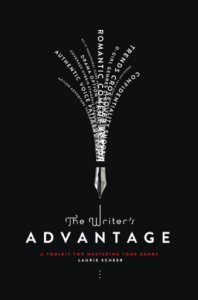 This post is adapted from The Writer’s Advantage: A Toolkit for Mastering Your Genre by Laurie Scheer. I highly recommend taking a look if you’re writing genre or popular fiction.
This post is adapted from The Writer’s Advantage: A Toolkit for Mastering Your Genre by Laurie Scheer. I highly recommend taking a look if you’re writing genre or popular fiction.
The post How to Tell If Your Story Idea Is Mediocre—And How to Improve It appeared first on Jane Friedman and was written by Laurie Scheer.
October 16, 2014
How True and Factual Does Your Memoir Have to Be? 5 Principles

Photo by abhiomkar / Flickr
Today’s guest post is adapted from OUR LIFE IS A BOOK: How to Craft and Publish Your Memoir, by Brenda Peterson and Sarah Jane Freymann, published by Sasquatch Press, 2014.
Memoir is a most intimate bond and sometimes our characters are not content simply to be created by us. If they are still alive, they can talk back, argue with us, disown us, call us to account, and sometimes congratulate or thank us.
Unlike the fiction writer, the memoirist must truly face his or her characters.
A memoirist will not exactly mirror everyone else’s perspective, so there is always room for disagreement. You may hear:
“No, that’s not the truth.”
“It didn’t happen that way. That’s not the way I remember it.”
“You’re lying!”
Much of what we remember is forever lost in the physical world, however much it may shimmer and possess us now. Can we trust our memories as “facts?” And what if others disagree? How do we explain our creative process and answer their protests? Here are a few principles to assist you.
1. Trust your own lens of memory.
One clue to “my truth” and “your truth” is how we remember.
In a seminal The New Yorker article, “But Enough About Me,” memoirist Daniel Mendelsohn discusses the history of memoir and the challenge of memory. When the Mendelsohn brothers hear a high-school choir singing a 1970s pop song, Matt turns to his brother Daniel and asks if he remembers that they sang that very song together in choir.
I looked at him in astonishment. “Choir? You weren’t even in the choir,” I said to him. I’d been president of choir, and I knew what I was talking about.
Now it was his turn to be astonished. “Daniel,” he said. “I stood next to you on the risers during concerts!”
This is typical of how siblings and other family members, while sharing the same childhoods, don’t necessarily share the same memories. More often than not, we each have wildly different versions of that shared past.
What is the memoirist’s responsibility in telling the truth, the whole truth? What is our responsibility to others who share our story?
We say: Vive la difference! Be prepared to encounter other people’s points of view, but trust your own lens of memory the most. After all, it is your story, your personal truth. You can always say to someone who strongly disagrees with your life story: “I look forward to your book on the subject.”
2. Get the facts as right as possible.
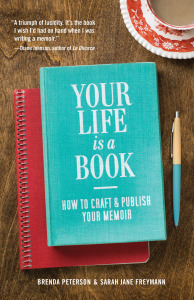
In her clear-eyed essay, “Memoir? Fiction? Where’s the Line?” author Mimi Schwartz advises: “Go for the emotional truth, that’s what matters.”
Get the facts as right as possible with research, asking questions, checking original sources, journals, and newspapers. Ask for help to check these facts from those who were also there. But if your fact-checking is met with unreasonable demands for edits, threats, or angry arguments by readers who won’t allow you to tell your truth—they lose the privilege of being part of your writing process. We know of one memoirist who, while writing his memoir, was bullied by his family; several siblings and his father tried to censor and control his memoir, demanding to read and “correct” it before publication; they even threatened lawsuits before and after his book was published.
Obviously, those relatives lost any voice or rights to be consulted on facts or any other aspects of the memoir. And after his book was published, parts of the family shunned the author—which wasn’t such a bad thing, considering the toxic family dynamic.
Remember Joan Didion’s, famous maxim: if you remember it, it’s true.
3. Fill in the blanks of memory, but disclose uncertainty.
Many writers begin their memoirs with a sense that the details of their lives are lost—but some part of our brains is always watching, recording, and storing our life stories. When we consciously turn our minds back to those scenes, they often return in vivid detail.
If you don’t remember, you can always use techniques like: “I don’t recall the exact shade of his eyes, but what I do remember is how he never seemed to blink.”
One way to signal to the readers that you are telling your reconstructed truth is to use a disclaimer in the front matter. For example, “This story is true to the best of my ability and drawn from my memory, journals, and letters.”
Other techniques can signal to the reader that your memory is sketchy or that you’re using creative license to fill in the missing pieces. This is just what author Joyce Wadler did in a recent New York Times essay, “To the Best of My Memory, It Was Love.” Here are some of the ways she qualified her memories, while also making us trust her as a reliable narrator. Writing about her gorgeous cousin, who “made old men weep,” Wadler says:
I don’t remember men literally weeping, by the way—that’s hyperbole. And if I did I wouldn’t trust myself, because according to an article I read recently, what we consider a memory is actually a memory of a memory, which we refine every time we tell it. And as writers are known to be great embellishers and we are dealing with a story that is well over 55 years old, consider yourself forewarned.
If you, like Wadler, tell your life stories to the best of your memory, and still find some scenes remain inaccessible, just let the reader know that you are filling in blanks.
4. Add authentic dialogue.
Writing down remembered conversations is one of the most engaging techniques for a lively memoir. In working with and teaching memoir, we’ve noticed that the biggest sin of omission in many unpublished memoirs is the lack of realistic and exciting dialogue. Many beginning writers are wary of dialogue because they aren’t comfortable “putting words into other people’s mouths” or they don’t really remember what the other people in the story said.
“How can I write dialogue I barely remember between people? Or, when I wasn’t there to actually hear it?” many students ask. “What about conversations before I was even born? Do I just…well, make it all up?”
The answer is, you do recreate it. This so-called “embellished dialogue” is acceptable in memoir because the reader understands the writer is not a tape recorder. As memoirists, we are recalling to the best of our ability what was said. You can always remind the reader that you are writing conversations as you remember or imagine them. We all realize that memory is faulty and that different people may remember completely different snatches of conversation, depending upon their own points of view.
But it’s worth the risk of someone protesting, “That’s not what I said!” because dialogue is a vital element of storytelling and it’s important to include dialogue in every scene.
Well-crafted dialogue is also a technique for suggesting other points of view. It is a release from what can too often feel like being trapped in an elevator with a first-person narrator. Dialogue opens up the action to other voices and tones.
5. Be selective about when and how you show your work to others.
It is hard enough to remember scenes from your life without having family, friends, or observers—whether well meaning or competitive—correcting your angle of vision with their own. We always advise our students and clients not to show their memoir, especially as they are first drafting it, to family members or spouses, co-workers or even some friends. Your evolving memoir needs a good first reader, critique group, editor, or agent. These professionals and writing peers know how to nurture a growing book with honest and constructive criticism. They understand how vulnerable a creation can be in its first stages of life, and how much harm unskilled probing and tampering can cause.
There will be a proper time to expose your memoir to other readers who are not writers or publishing professionals—and that should be when you have at least a finished first draft of your book. Only then should you consider involving non-writers in the process, such as family members or friends.
This is not to say that you can’t research, and ask questions of fact with others who shared your life story, or even at some final point show certain sections of your memoir to those about whom you’ve written.
Resources
Lee Gutkind, author of Keep It Real: Everything You Need to Know About Researching and Writing Non-Fiction, explains that creative nonfiction “presents or treats information using the tools of the fiction writer while maintaining allegiance to fact.” Gutkind’s Creative Nonfiction magazine is one of the best places to find quality non-fiction and memoir.
Robert Root and Michael Steinberg’s anthology, The Fourth Genre: Contemporary Writers of/on Creative Nonfiction , covers the landscape of some of the best memoirists at work today.
 Excerpted with permission from OUR LIFE IS A BOOK: How to Craft and Publish Your Memoir, by Brenda Peterson and Sarah Jane Freymann, published by Sasquatch Press, 2014.
Excerpted with permission from OUR LIFE IS A BOOK: How to Craft and Publish Your Memoir, by Brenda Peterson and Sarah Jane Freymann, published by Sasquatch Press, 2014.
The post How True and Factual Does Your Memoir Have to Be? 5 Principles appeared first on Jane Friedman and was written by Brenda Peterson & Sarah Jane Freymann.
October 14, 2014
The Long-Term View: 3 Exciting Mind Shifts for Author Entrepreneurs

Mike Cogh / via Flickr
Note from Jane: Today’s guest post is from Joanna Penn (@thecreativepenn), and is based on her new book, Business for Authors: How to Be an Author Entrepreneur, out now in ebook, print and audio.
During the last five years, I have seen a major shift in the publishing arena because of emergent technology and a changing economic situation. We’ve seen:
the rise of ebooks
the shift to online purchasing and the closing down of many physical bookstores
the indie movement with creatives selling directly to consumers
the empowerment of agile micro-business
the growth of mobile and apps and a global online economy.
But on a day-to-day basis, it’s easy to get caught up in this month, in this year, focusing on how we can make money from one book right now. After all, we’re still enmeshed in a publishing industry and media obsessed with the gatekeepers and the traditional model of scarcity.
But here are three trends that mean this revolution has only just begun. These are not new ideas, but it’s time that authors embraced them as creative entrepreneurs.
1. Think global.
One of the reasons I love traveling is that it reminds me of how insignificant I am on the face of the earth. It puts my life in perspective, reminding me to live each day to the full.
But it also excites me from a business viewpoint because there are readers everywhere. Walk along a street in New York, London, Tokyo, Lagos, or Delhi and you will see potential readers. People are people, regardless of where they live—they want education, entertainment and inspiration—and perhaps your book is the right one for them. Perhaps your book will change their life, touch their heart, or just give them some escape for a few hours.
Focusing on the US market alone is limiting. Indie authors can now sell their books in over 170 countries through online distributors like Amazon KDP, iBooks, Kobo and Nook, and it is free to self-publish on those platforms. I have sold books in 58 countries, in four languages and in ebook, print and audiobook formats. When I sold an ebook in Burkina Faso through Kobo, I was delighted. Most people would struggle to find the little African country on a map, but someone there found my book and (hopefully) read it.
Authors writing in English have a great advantage, but the market for ebooks in other languages is growing every day. Authors can also now collaborate with entrepreneurial translators in joint ventures to reach even more people. (Note from Jane: BabelCube is an emerging online market that helps connect authors and translators; also see last week’s post from Beate Boeker on finding German translators.)
Global sales are not restricted to ebooks either. Digital publishing incorporates print-on-demand as well as audiobooks and ebooks in multiple formats. It can mean hardback special editions, photo books, children’s books with special binding and illustrations, as well as good quality, but basically disposable, paperbacks. Print-on-demand (POD) means that authors can compete by selling physical books and products, as production and shipping can be done by companies that specialize in POD technology. We don’t need to print or hold stock; all of my books are available in print, and I don’t have any of them in my house.
In a similar way, audiobooks used to be constrained by physical media, but can now be instantly sold and downloaded anywhere. I sell my fiction through Audible/ACX.com and my nonfiction audiobooks direct from my website.
2. Think mobile.
While extensive press has been devoted to the demise of stand-alone e-reading devices, the rise of tablets and smartphones continues. I’m one of those super book consumers, reading three to five books a week, and I was one of the first people in Australia to buy the international Kindle in 2009. Moving to digital allowed me to ramp up my reading dramatically.
I live in London with no car, so I spend a lot of time on public transport, where I read on mobile or tablet devices. I also live in a one-bedroom apartment and I don’t have the space for physical books. I buy knowledge, entertainment and inspiration when I buy a book, not a physical object.
I’m not alone in my choice of reading device or my attitude to digital. You may not read in the way that I do, but people who live in highly populated urban spaces, in smaller living quarters, are a growing percentage of the population. If the shift in consumption is toward mobile devices, then author-entrepreneurs can compete just as well as big publishers.
3. Think direct: the rise of indie and artisanal.
I love the term “indie author,” as it resonates with the same energy as indie film and indie music: artists who create without big labels, who are perceived as more original than the blockbuster names. The shopping public are moving toward supporting artists directly, frequenting farmers’ markets, funding Kickstarter projects, and buying direct from craftspeople online.
There’s been a renaissance in people shopping for artisan-made goods, crafted with care in smaller batches. People want to shop from those who care enough to dedicate their time to making beautiful things, true artisans who put their heart and their story into their work. Guy Kawasaki coined the term “artisanal publishing” in his book Author, Publisher, Entrepreneur, and it’s a phrase that also resonates with indies because it implies creative freedom and dedication to quality on a small scale.
For my book Desecration, the print edition contains interior designs from an artist in the Netherlands who I found through Pinterest. I drink in bars in London where they serve strangely named beers from micro-breweries, only available locally.
This “think local” attitude is spreading, and people like to buy direct from artists. More authors sell books directly from their sites—whether that’s signed print books, or direct ebook or audiobook downloads. It’s not a new phenomenon for nonfiction authors to sell PDF ebooks and courses directly, but it is a shift to see fiction authors selling DRM-free ebooks from their sites instead of directing customers to the retail stores.
With this pace of change, what will the next five years bring? The next ten? If you sell your rights now, if you settle for a deal where you no longer have control of your creative work, what will you miss out on over the next period of change?
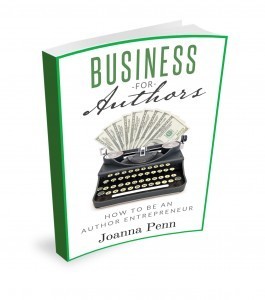 Note from Jane: Joanna’s new book, Business for Authors: How to be an Author Entrepreneur, is out now in ebook, print and audio.
Note from Jane: Joanna’s new book, Business for Authors: How to be an Author Entrepreneur, is out now in ebook, print and audio.
The post The Long-Term View: 3 Exciting Mind Shifts for Author Entrepreneurs appeared first on Jane Friedman and was written by Joanna Penn.
October 6, 2014
The German Market: A Guide for Indie Authors

Note from Jane: Today’s guest post is by Beate Boeker (@BeateBoeker), whom I met at the International Women’s Fiction Festival in Matera, Italy. It was the first writers conference I attended that offered any kind of in-depth information (geared toward authors) about the international and translation market. Find out more about Beate and her novels at her website.
This is a compilation based on the experience of several indie authors who started in the English-speaking market and have branched out into Germany. It will never be complete, and it’ll never be perfect, but we hope that it’ll help. Any legal advice should be verified by a German lawyer. The last changes were made on Sept. 30, 2014.
The General Situation
The e-book market in Germany is not as developed as the one in the US. Many (even younger!) people don’t like to read on digital devices. The iPad has made inroads, but mostly in the male/executive type of reader. It will come, and it will grow, but it’s nowhere near as far spread as it is in the US or UK; paperbacks are still more important.
As far as traditionally published books: Many romances are sold as flimsy paperbacks at newspaper shops and in supermarkets—not in bookstores at all. They are typically considered to be “trashy” novels, even though they sell in huge quantities, and are regarded with a bit of arrogance by other authors. These novels have to be rather short (40–50K max), so many translators get the job to cut the original novel to fit the smaller size. This might happen if you are accepted by the publishers who do this kind of distribution (e.g., Cora).
Laws Governing Translations in Germany
Plan on paying a good translator roughly $7,000 for a 90,000-word novel. (The price is determined by the number of words, about 7–9 cents per word). Spanish translation is cheaper, as it’s more widespread. The most expensive translations are Nordic languages (e.g., Finnish).
According to German law, even if the translator wanted to, she couldn’t grant you the translation copyright because it is an inalienable right. This means they can’t transfer the copyright to you. They can assign you all the basic rights that go along with it, but you can’t transfer copyright under German law. Click here for the Urheberrecht law; this is the provision on transferring copyright.
If you get a US lawyer who writes the contract as work-for-hire under US law, you will not have effected a valid transfer of the necessary rights to publish your work. You can’t say under German law, “I give the copyright to you,” but you can say, “I assign to you, for the rest of my life, the rights to do X, Y, Z, etc, and you agree not to sue me over moral rights.” So you can have almost the same effect as a transfer of copyright, but you don’t accomplish it in the same way as you would in the US.
Also, translators must be given “reasonable compensation.” There’s a timeline of the litigation history and a summary (in German) here. Or you can read the court case here.
Hire a German literary lawyer to look over your contract and tell you what you should do to protect yourself. Again, don’t talk to a US attorney—they don’t know German law, and any US attorney who advises you on a foreign transaction without recognizing that they need local counsel is not competent to handle an international IP conversation. Talk to a German lawyer. If you’re going to spend $10,000 or more on a translation, even multiple times to get a series going in German, then you should spend the extra $600 or $700 to get the peace of mind that you’re doing it right. Here’s one possible lawyer.
For authors who already have an existing translation in German but want to change it or want to re-do it from scratch:
By its very nature, the second translation, even if done from scratch without ever looking at the first translation, will resemble the first work in many parts, and it will be difficult to prove that you did not copy it. The easiest way to go about it is to talk to the copyright holder of the first translation. You are:
probably better off trying to buy their old translation for a little bit of money than retranslating, and having things be free and legal, and
if they won’t allow you to do that, ask them what steps they would want you to take for the retranslation so they can feel secure that no infringement was committed.
To Find an English-to-German Translator
The Libelli Agency organizes translators and editors from English into German. You can ask them for a quote.
This is an association of literary translators.
And these are some translators:
Liz & Athina
Helga Murauer-Aquilina
Barbara Ostrop
Laws and Pricing for German Books
The VAT (Value Added Tax = sales tax) in Germany is 19%. For books, it is only 7%.
There is a special law called “Buchpreisbindungsgesetz” (yes, the Germans love long words) that makes sure that all books in Germany have the same price at every retailer. This means that you cannot discount your e-book in German at Amazon if it’s offered at a higher price somewhere else. Therefore, you should set one price and stick to it. However, paperback and e-books do not have to be at the same price.
You can sell your novels at a higher price in Germany than in the US because Germans are used to books being more expensive. A German novel at 2.99 Euros might be considered to be too cheap by a consumer (unless they’re used to reading in English!).
Amazon in Europe is based in Luxembourg, where they pay the lowest taxes in all of Europe, 3% for books. The European sites of Amazon have to show the VAT of 3% already included in the sales price. This means that if you want to price your novel at 4.99 Euros, you have to enter a price of 4,84 Euros at your KDP dashboard for an e-book. The calculation is done like this:
[Sales price you want customers to see] divided by 1.03 = sales price you have to enter at the KDP dashboard
German Book Titles: They Can Be Protected Under Copyright
In German law, the title of a book could be protected by copyright as well (the so-called “Titelschutz”). However, the law stipulates that in order for the copyright to apply, it would have to be a “sufficiently individual/outstanding” title. If it’s a more generic title, it can’t be protected.
Make sure you check the titles that exist in the German market—if you see the title by the dozen, you’re probably safe. If you don’t see it at all, you’re safe. If only one other novel has it, think about choosing another title.
It’s different if the title is registered as a brand (which would definitely make it a no-go), but this is rarely the case. To read more about this, check the Wikipedia page on Titelschutz.
Making Payments to People in Germany
Banking systems are very different in Europe. Typically, any bank in Europe will ask you for an IBAN. The IBAN is a long number that starts with the first two letters of your country (e.g., DE for Deutschland/Germany, then the number that identifies the bank, then your account number).
However, the IBAN is basically unknown in the US. If you have to pay someone in Germany, you need to use a foreign exchange system. PayPal takes a huge cut and is not a good solution. Try XE.com—they give the best exchange rate and charge a fee. They do take longer to deliver than some other solutions, but money-wise it’s the best.
Book Distribution in Germany
E-books: Bookwire is a company that specializes in distributing to all e-book platforms. It costs 29 Euros per book. They speak English and are very professional. The contract is for two years to start with, and you can choose where you wish to be distributed.
Paperbacks: If you want to distribute print books (and you should!), then you can upload your manuscript to CreateSpace, just like you do with your English books. This will get you into all the Amazon stores in Europe with your German title.
You have to calculate 7% VAT, not 3%, when you set your European price. If you want your novel to be priced at 9.90 Euros (which is roughly the minimum if you don’t want to make a loss on extended distribution), then you have to set the price in your dashboard at 9.25 Euros.
However, so far, CreateSpace does not include any of the big German book distribution companies (mainly Libri). This means that a German bookstore can only order your books if they’re signed up with CreateSpace Direct or the other big US distributors (like Ingram or Baker & Taylor). Typically, German bookstores do not work with these distributors. Hopefully, Amazon will change this soon.
As an alternative, you can sign up your book with Books on Demand (BOD). This is a German company situated close to Hamburg. However, they are more expensive than Amazon, and you’ll end up with higher sales prices and less margin. However, BOD does offer full distribution to all German distributors. You can do a price test calculation for your book here.
BOD will ask for full exclusivity for your novel (either print or e-book—you can separate them) for a period of two years. CreateSpace doesn’t care if you distribute your novel elsewhere at the same time.
German Book Marketing
This post from Joe Konrath’s blog might help.
The website XTME is the strongest platform for indie novels at the moment.
There’s a print magazine called LoveLetter (for romances only). They do an annual reader convention in May in Berlin where many English authors attend. Inform them at least two months in advance about a new release; otherwise, they won’t consider featuring your novel. Contact them.
The German counterpart to Goodreads is LovelyBooks.
German Market Networking
Almut Heuner lists several authors and interesting contacts on her website. However, this is mainly for mysteries/thrillers, not a focus on romance.
This page on the Loveletter website lists publishers (“Verlage”) on the lefthand side and blogs/forums (romance related) on the righthand side. Some of them are out of date, though.
German Literary Agents
If you decide not to go indie after all: This is an internationally well-known agent situated close to Hannover. His name is Thomas Schlueck. You should let your agent contact him as he has the reputation of being somewhat unresponsive.
German Writers Conferences
There are no writer’s conferences (meetings among peers) in Germany. If you want to meet German authors and possibly also some editors, or simply dip your toes into the European market, try the Women’s Fiction Festival that takes place every year in September in Matera in the South of Italy. It’s bilingual (English & Italian).
Authors Active in the German Market
Emily Bold, Tina Folsom, Courtney Milan, and Lisa Marie Rice (to name but a few) are all active and successful in Germany. The latter three have all given helpful input to help creating this document, particularly Courtney, when it came to payment and legal matters. A big thank you to them!
Note from Jane: My thanks to Beate for graciously giving me permission to run her post. Be sure to check out her cozy mystery series and romances at Amazon.

The post The German Market: A Guide for Indie Authors appeared first on Jane Friedman and was written by Beate Boeker.
October 2, 2014
The Benefits of Procrastination & Distraction
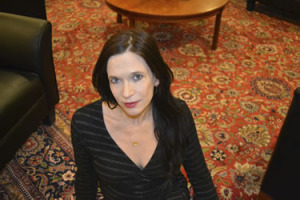
Elizabeth Kadetsky
Every month, Glimmer Train releases a bulletin that includes a few brief essays by writers on the writing life. For October, I was happy to find the themes of procrastination and distraction—and how they can be a positive influence in our work lives.
Elizabeth Katdetsky discusses how she gives in to the procrastinator in herself, and how her recent project is a testament to “artful obsession, to letting go expectations, the quest for reward or compensation.”
Claire Luchette finds that the best thing she can do to help her writing is to … not write.
And Ron Savage tells a story that is as much about writing as it is about patient waiting.
The drive to be ever-more productive can be quite an affliction, making us a little too serious and impeding our best work. These pieces might help take the pressure off and perhaps create self-awareness around your writing (or non-writing) habits. Go read them all.
The post The Benefits of Procrastination & Distraction appeared first on Jane Friedman and was written by Jane Friedman.
September 26, 2014
5 Lessons in Publishing Success From Bella Andre

Matera, Italy
This week I’m speaking at the International Women’s Fiction Festival in Matera, Italy, which is slanted this year toward digital publishing and the future of authorship, particularly indie models.
On Friday morning, Bella Andre gave a talk on her path to success, from a traditionally published author with 7 titles in 2010, to self-published phenom with millions of titles sold and an 8-figure annual income. While she didn’t structure her talk with specific takeaways, these are the lessons I saw in her story.
1. Speak up about what you’re doing, especially your successes—and target your message appropriately.
When Andre self-published her first book, she did not have a big fan base from traditional publishing. However, she had collected several hundred emails from people over the years (the seven years of her traditional career). She wrote each reader a personal email that said, “Here’s the book that you’ve been wanting that my traditional publisher did not put out, and here’s how you can get it.” That book ended up being the first self-published book to hit the top 25 bestseller list of an online retailer.
Andre felt it was important to spread the word about her success; she had begun selling 1,000 copies per day. She got on Twitter and sent a targeted tweet to three news outlets saying that she was the first self-pub author in the top 25 with her ebook. The Washington Post was one of the outlets, and a reporter got in touch right away, in the hopes Andre could serve as exhibit A for a piece they were developing on ebook self-publishing. Here’s the article that was published.
2. Decide on your long-term strategy and execute it.
After her first book took off, Andre decided to bet on herself, take two years and focus on producing a series. She had noticed that the authors who really did well and the authors that broke out were the ones who had long series—and that authors pop at book five. She says, “You’ve got to put the blinders on—there’s a lot of white noise constantly.”
She decided she would write 8 books about 8 siblings—The Sullivans. When she released the first one, it mirrored the sales of her earlier self-published book. She released the second one, and sales of her first book in the series increased. The same thing happened with book three; sales of books one and two increased. Her strategy worked even better than she had hoped. At about book five, she says, “The world went crazy,” just as she had anticipated. Sales skyrocketed and she heard from all the major publishers and agents. (She ended up signing the first print-only book deal.)
3. Find the sweet spot between what you love to do and market demand.
Andre puts in the work; she produces a book every three months by writing 25 pages a day. This is her optimal pace; she knew she could put out 8 books in two years.
She says, “When you can find the perfect intersection between what you love to write, what you’re good at, and what readers love, it’s that perfect situation.” She asks, “Do you know what kind of readers your books attract? Where is that perfect intersection?”
4. Most people don’t do what it takes; they’d rather do their own thing.
Andre has spoken to and advised hundreds of writers (if not thousands), and she says, “Most people won’t do what you tell them to do; they go off on their own way.” She added, “The business is the business, and quite frankly, yes, it takes a lot of time. Yes it can be difficult and you do need a group of people around you. … But what I’m telling you right now, if you do your work and research and pay attention to what’s happening in the world of publishing, you can make great success with what you’re doing.”
Does doing your own thing equate to the kind of financial success you want? Go back and read lesson three.
5. No work is wasted; it all contributes to the journey.
Andre started her talk by saying she began her career by earning a degree in economics from Stanford and wanting to be a rock star. She says, “There’s never been any wasted work along the way.”
When she first self-published, it was done while biding her time waiting for a traditional publishing contract. She didn’t particularly know what she was doing and didn’t even keep track of her Amazon KDP account credentials. But when she saw something exciting happening with her sales, she focused her attention on developing a strategy to support it and build on it.
What I see in that is a playful experiment, a curiosity and openness to exploration and adventure, that is a recurring theme in so many success stories. Even when efforts don’t pan out, you’ve added to your body of experience. Andre, on a later panel, talked about a $40,000 disaster in hiring translators (via eLance) for her series. I’m sure she wishes she could’ve avoided that experience, but what a valuable one to inform future efforts!
Go read more about Bella Andre at her website.
The post 5 Lessons in Publishing Success From Bella Andre appeared first on Jane Friedman and was written by Jane Friedman.
September 23, 2014
The Advantages of Author Portraits

Today’s guest post is by Simone Collins (@SimoneHCollins) at ArtCorgi.
My job is to help people commission original art from up-and-coming artists via ArtCorgi, a company I started earlier this year. Though the art I help people create consists of everything from romantic gifts to mobile game assets and painted scenes for wall art, I have seen a significant uptick in the number of authors approaching me for portraits and book cover design. As a result, I have discovered a handful of advantages they offer.
1. Polished Presentation
An author’s online presence has never been more important; you have to consider how you’re coming across on your website, Facebook, Twitter, Amazon, Goodreads, and various other sites where you’re interviewed or might be a guest.
Nearly every post, tweet, or article you publish will be accompanied by an avatar or profile photo. Polished and universally used profile images help create a cohesive and alluring personal brand. Well-lit, framed, and crafted images separate amateur authors from serious professionals.
2. Lower Cost
The go-to polished profile photo of choice is often a photograph. However, professional photographs can be quite expensive. Having a portrait drawn from informal personal photos or selfies can save a significant amount of money. Some of the most popular portrait styles on ArtCorgi hover around $25–$45, making them far less expensive then traditional photo shoots with professional photographers.
3. Uniqueness
Because most authors opt for photographs of themselves when presenting author profiles, one can stand out by opting for a portrait. They are relatively unusual.
4. Brand Reinforcement
 Some authors come to us for portraits because they help us reinforce their personal brands in a way that photos cannot. I. H. Laking, for example, had a cartoon-style portrait made for Amazon and social media. He opted for this style since he writes books targeted at younger artists.
Some authors come to us for portraits because they help us reinforce their personal brands in a way that photos cannot. I. H. Laking, for example, had a cartoon-style portrait made for Amazon and social media. He opted for this style since he writes books targeted at younger artists.
Laking’s ArtCorgi artist, Joseph Lee, worked with us to make his appearance uniquely friendly (by making the “sparkles” in his eyes larger than they would be otherwise), and the result comes across as more child-friendly and whimsical than a typical photograph could be.
5. Achieving the Impossible
The most common reason clients of all types (authors included) commission portraits is that they can be presented in scenes and costuming that would be prohibitively expensive to create in a photo shoot or with Photoshop.
Take, for example, this piece commissioned by author Abigail Morrison. I do not even know where she might go about finding a shark to punch in real life. But this illustration cost less than $100 to create, which I like to think is quite a steal.

How to get an author portrait
While I would love for you to consider ArtCorgi.com and our dedicated site for authors, ArtforAuthors.com, you can also find artists who are available for commissions via deviantART and Tumblr—just search “commissions” and follow artists’ instructions for working with them.
If you would like guidance, don’t hesitate to contact me via Twitter (@ArtCorgi or @SimoneHCollins) or email. I have spent years working with freelance writers and novelists and would love to be of service.
The post The Advantages of Author Portraits appeared first on Jane Friedman and was written by Simone Collins.
Jane Friedman
- Jane Friedman's profile
- 1882 followers


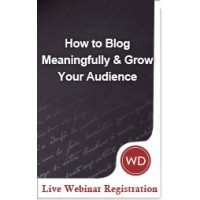 Also,
Also, 